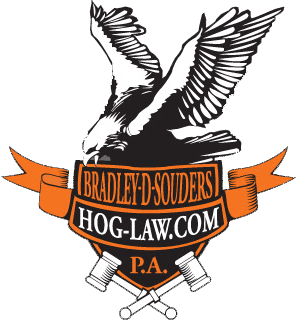Motorcycle Safety
HOG LAW believes in accountability and responsibility, both of motorcyclists and other motorists. Below, please find samples of public and private resources aimed at education, training, and motorcycle safety campaigns, promoting rider safety and public awareness, all to prevent accidents, injuries and fatalities. Such resources bring you closer to "RIDE SAFE" and to WATCH OUT FOR MOTORCYCLES!!!®
Please take a moment to review the information below to decrease your chances of being involved in a crash. With this intent, HOG LAW offers the following:
You can also visit our blog for more advice and suggestions on riding safely and smartly.

